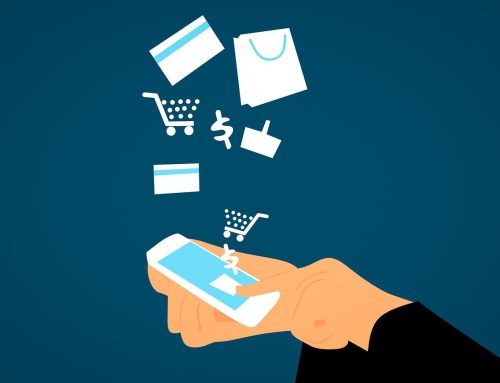 To Tweet or to Instagram? That is the question.
To Tweet or to Instagram? That is the question.
For more and more people, though, the answer seems to be “to Instagram.”
In October of 2014, Instagram reported having more than 284 million active monthly users and more than 70 million videos and photos shared daily – up from 60 million in March of 2014.
That was compared to Twitter’s 232 million users at around the same time. With those numbers in mind, it seems evident that Instagram is pulling ahead as the leader of the social media pack, making it an essential part of every marketing scheme.
Read on to learn more about how the photo-sharing Supergiant is dominating the market right now and why your business needs to be on it.
The Rise of Instagram
Just nine months after Instagram reported hitting the 200 million user milestone, it pulled ahead of Twitter on Dec. 10, 2014. This is incredibly impressive considering that Instagram began as the brain child of two friends – Kevin Systrom and Mike Krieger. Launched on Oct. 6, 2010, Instagram sought to reform the social sharing world through the use of images (a picture is worth 1,000 words, after all).
In a rush of traffic that is unheard of for most startups on the market, Instagram took off. Roughly 25,000 users joined the service on its first day of availability and, since the launch coincided with the release of the shiny new iPhone 4 — whose camera was finally good enough to spell certain death for separate point-and-shoot devices and whose presence made the iOS base large enough to provide the network that a service like Instagram needed to take off like a runaway stagecoach — it’s pretty safe to say that part of Instagram’s immediate success was due to being in exactly the right place at exactly the right time.
Within three months, Instagram boasted one million users. Over the next several months that number continued to multiply, hitting 10 million at what seemed like the speed of light. Another aspect that made it unique among the start-ups of the time is that Instagram spent virtually no money on advertising – everything Instagram was experiencing was organic growth.
In light of the huge influx of users, co-founder Mike Krieger was forced to carry his laptop everywhere he went in case the site went down under the massive user demand – which it never did because he whipped that puppy out in bars, at dinner or still soapy from the shower to head off any problems before they began. It’s possible, in fact, that this is one of the things that set Instagram apart from Twitter in the early days – Instagram never went down like Twitter did during the famous “Fail Whale” episodes – periods where the site went down and displayed an icon of a cheery beluga being lifted from the depths from happy Twitter birds – hardly enough to sooth angry Twitter users yelling at their screens.
All those impromptu laptop sessions paid off, however, and the service kept getting better and better. When teen heartthrob Justin Bieber joined the service in 2011 (fun fact – when you Google Bieber’s name, his Instagram account is the first result to pop up – before even his official website or his Twitter account), the site saw a literal uptick in users. The first Bieber photo drew about 50 followers a minute and one comment every 10 seconds immediately after it was posted. Ironically, Bieber also Tweeted the Instagram photo out, inadvertently using Twitter to drive users to Instagram.
After the Biebs jumped onboard, the site continued to grow and the founding duo gained celebrity and stuck true to their motives – they kept their app simple in contrast to sites like Facebook, which made complicated desktop apps in order to extend their service to mobile users. The dynamic Instagram duo also refused to change the essential skeleton of the app even as user numbers exploded. The team’s dedication to their original structure paid off, too. When the app launched on Android, it drew more than one million users in a short 24 hours and in 2012, when Facebook purchased Instagram for a whopping $1 billion, it seemed to many tech experts the only thing Facebook could do to keep its budding rival from usurping it from the throne entirely.
Why Instagram Rules All
Although Facebook is still the most popular social media site in the world – boasting upward of 1.15 billion monthly users, Instagram has a unique seat in the social media parlor. This is due to the following things:
- Instagram encourages creativity. What’s more, the service makes creativity simple without putting many limits on what users can and cannot do. While Twitter has historically featured a strict character limit (which might be on its way out, according to some) Instagram has never put any limits on its users aside from banning obviously explicit or inappropriate content. The site has simply offered a platform for users to share photos, apply cool filters, find content they love and interact with people they admire. It’s truly that simple.
- Instagram is intimate. Again – a picture is worth 1,000 words. It’s one of the oldest sayings in the book and, more and more, it seems to be true. While Twitter offers a unique microblogging service that allows users to share tweets with followers, it isn’t as focused as Instagram, which only offers photos. Although many people adore Twitter, Instagram is different. Instagram is, in a word, more intimate. Where else can you get a peek of Taylor Swift’s scrunchy-faced cat or Herschel Supply’s newest back-to-school lookbook?
- Instagram upped its authentication process for a better user experience. Have you ever searched Instagram for a celebrity you love only to be misled by a profile boasting 15 followers and claiming to be Kim K’s “private” account? Well, thanks to Instagram’s new “verified account” feature, you’ll be free from this trouble from here on out. In addition to cutting back on spam Instagram accounts, which have historically been one of the largest user complaints about the service, the new account verification badges will help users find people they genuinely want to follow – be it a celebrity or a musician. The verification badges began showing up on the accounts of celebrities in 2014 and appear as a small blue checkmark next to the account user’s name, as seen here on Katy Perry’s Instagram account:
In contrast, decreasing spam has been a large problem for Twitter, which has reported that nearly 10 percent of its users are spam accounts.
- Instagram focuses on visual content. Although most other social media platforms including Facebook, Twitter and Google+ all offer visual content options, nobody (except Pinterest, maybe, which approaches it from a different angle) focuses exclusively on visual content quite so much. When you think of it this way, Instagram’s viral growth makes perfect sense. Visual content has been the most rapid area of growth in social media for years now – in fact, including a photo in a social media post increases the likelihood that the post will be clicked by 18 percent. In light of Instagram’s domination of the field, other services are hurrying to catch up – Twitter is focusing on its Vine short-video offering, for example. As it stands now, though, Instagram users are interacting with posts on the site at a huge 18 times the rate they do Facebook posts — yet another statistic that proves Instagram is a serious force to be reckoned with in the social media market.
Another not-to-be-overlooked part of Instagram’s visual dominance is the quality of the photos Instagram offers. Thanks to the quality of the cameras on today’s smartphones and the filters within the Instagram apps (many of which were designed by professional photographers such as Cole Rise, who created the Rise filter), Instagram’s image quality has gotten to be something that approaches that of DSLR images. Thanks to the app’s attention to detail and dedication to bringing the everyday Joe a powerful art platform, Instagram has made it possible for people without the resources to attend photography school to produce surprisingly beautiful outcomes. What’s more, these people can also gain an audience of their own and become an audience for other people’s work.
- Instagram allows access. We all have our cell phones in our pockets all the time. Imagine if you could look through the phone photos of your favorite musician or public figure – how incredible would that be? What kind of cool, personal moments would that allow you to access? That’s essentially exactly what Instagram does and may be one of the main reasons the service has taken off. Instagram, in many ways, is a window into the private worlds of other people, and a powerful one at that. Understandably so, users have always been eager to engage with it.
The Future of Instagram
As it stands now, industry leaders are predicting that Instagram will only continue to get bigger. The app is experiencing huge demand from the advertising market and exponential rise in users on a monthly basis. While Twitter certainly has its place in the social media royal family, it’s clear that Instagram has offered users a unique experience that has helped it pull ahead of Twitter and carve out its own position in the social media universe.
Although it’s hard to say what the future will hold for Instagram, it seems safe to assume that the skeleton of this beloved service will stay the same while the features it offers just keep getting better and better.








